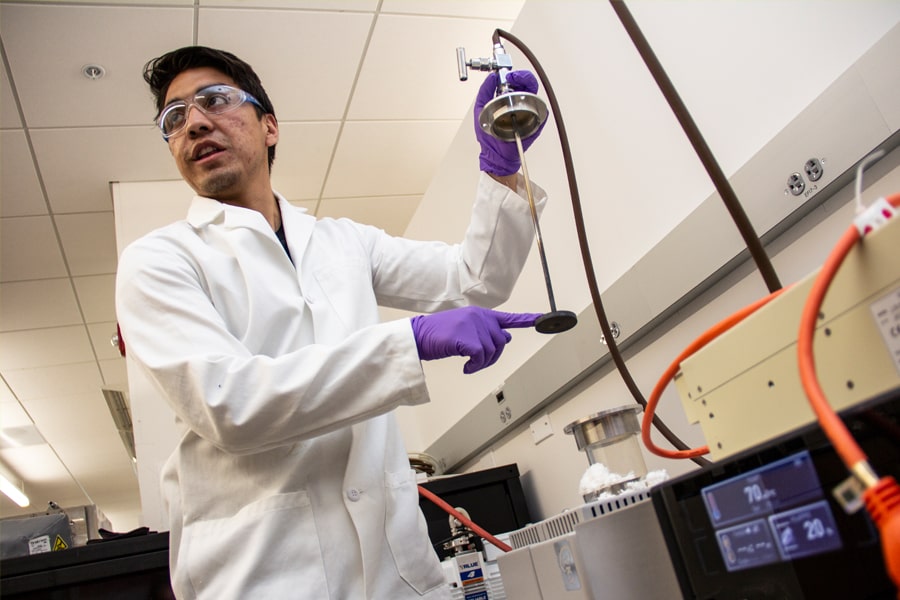
Mechanical Engineering Student Heats Up Interest in 3D Printing with Ceramics
By Lucas Grasha
Media InquiriesCarnegie Mellon University Ph.D. candidate Edgar Mendoza is breaking the mold by researching 3D printing with ceramics.
Mendoza is a Ph.D. candidate co-advised by Mechanical Engineering professors Jack Beuth and Reeja Jayan. Through them, Mendoza is learning about an unusual combination of fields: Beuth’s metallic additive manufacturing and Jayan’s ceramics research.
“I wanted to merge their fields,” Mendoza said. “So we decided to pursue the emerging field of ceramic additive manufacturing.”
High-purity ceramics have great advantages, such as high hardness and temperature resistance, but they can be made only with temperatures achievable in an industrial blast furnace. Jayan researches how to reduce these temperature requirements; Mendoza aims to apply this technology to additive manufacturing with Beuth’s help. Additively manufacturing ceramics at relatively lower temperatures could assist industries such as aerospace, automobile and energy.
Mendoza recently received the National Science Foundation’s Graduate Research Fellowship to pursue this line of research. When he received the NSF fellowship, Mendoza and his advisers were elated.
“So few students receive this kind of award,” he pointed out. “It means the National Science Foundation believes in our team’s research.”
Mendoza received his bachelor’s degree in mechanical engineering at UCLA in his native Los Angeles. He chose to pursue his Ph.D. at Carnegie Mellon because of the research, career and outreach opportunities at the university.
“I feel like outreach isn’t necessarily important to many,” he said, “but it shouldn’t be overlooked.”
When Mendoza arrived at CMU, Beuth and Jayan invited him to their labs.
“They’re both great mentors, and I didn’t want to lose one over the other,” he said. In blending his advisers’ curricula, Mendoza said he wondered why ceramics hadn’t yet been used in 3D printing.
“We looked at this issue and said, ‘There must be a reason why people aren’t doing it,’” he said.
He discovered roadblocks but also opportunities.
In his NSF proposal, Mendoza emphasized that he, Jayan and Beuth are positioned to combine expertise to create unheard-of technologies and processes.
“My advisers threw a lot of information at me,” he said. “And it was my job to create a story based on sound scientific principles to prove that we can tackle the current problems in ceramic additive manufacturing.”
Related story: Research into Printing Ceramics Could Break Industry Mold